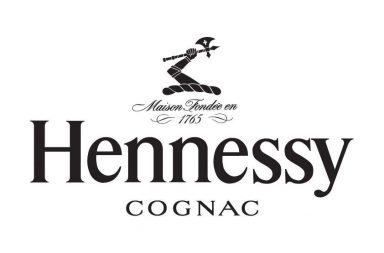Content
After the devaluation, many Chinese companies moved to pay off foreign debts for fear the renminbi would fall further. Investors also sold huge sums of renminbi and switched into other currencies. China’s central bank spent nearly $100 billion in August alone to prop up the renminbi. Under a new rule, China would start allowing other countries’ central banks to begin buying its bonds in Shanghai. Officials in other countries just had to get permission first from the People’s Bank of China.
Over that period of time he has traveled by plane, train, car, motorcycle and even camel to explore almost every corner of the country. When traveling internationally, there’s always the risk of receiving fake currency as you are targeted as an “unbeknownst traveler.” Luckily in China, the risk of getting your hands on fake RMB is really low. This guide will teach you how to design an effective checkout process for cross-border payments, with a specialized focus on the trending emerging markets. From that point a series of events happened and, in 2019, the PBOC let the Yuan reach a threshold level of 7 to the US dollar. This level was a mark, because it was the first time that the Yuan had crossed the “7 limit” since 2008. Another interesting fact is that the official symbol for the Yuan is ¥, but almost everywhere in China you will find the Chinese character 元 instead.

The biggest categories are computers, cell phones, apparel, and toys/sporting goods. Firstly, let’s have a quick review of all the different ways you can refer to money in Mandarin Chinese. It’s safe to say that during my time in China, I have used my wallet with increasing rarity and I use my phone for almost every financial transaction. Currently, one Chinese Yuan is equal to 0.15 United States dollars. The Yuan is undervalued compared to the dollar, and this makes the purchase of Chinese goods cheaper.
Note
During this time China also stabilized the exchange rate for its currency. A fixed exchange rate is when a nation attempts to keep its currency at a certain value to stabilize its economy and industry. The goal of China at this time was to overvalue itself to make the nation less reliant on imports and start to export goods to the world. China imported the machinery needed to industrialize and then sold it to strategic industries at a very low cost. The Republic of China, which governs Taiwan, believes wide usage of the renminbi would create an underground economy and undermine its sovereignty.[80] Tourists are allowed to bring in up to ¥20,000 when visiting Taiwan. CNY is the official currency abbreviation for the Chinese Yuan under the ISO 4217 standard.
- Today, the RMB is one of the top-five most-used currencies, in addition to the U.S. dollar, euro, yen, and British pound.
- Selling a big chunk of Treasurys would quickly devalue China’s own remaining holdings.
- Today, the traditional character for yuan is also used in the currencies of several Chinese-speaking regions, such as the New Taiwan Dollar, the Hong Kong Dollar, the Singaporean Dollar, and the Macanese Pacata.
- This works well for China because they have a valuable currency, and most nations in the world will buy Chinese goods due to their low price, and the ability that China has to mass produce products quickly.
China uses currency controls to maintain the value of the Chinese Yuan at a favorable level. Every day the PBOC sets a midpoint value against the U.S. dollar, based on previous trading sessions and movements in international currency markets. The price of the yuan is allowed to trade within 2% of that price. At times, the midpoint may also be adjusted based on undefined “counter-cyclical” factors. Chinese officials, he said, were pleased that a major trading partner in Africa liked the renminbi.
Download Audio and Video Lessons
In a 1910 survey conducted by the Ministry of Finance of the Qing dynasty, there were about 360 million Mexican silver dollars circulated in China. In the Ming dynasty, an increased supply of silver reached China from Mexico and South America through trade with the Spaniards, and the Spanish Peso was accepted as currency in ports engaged in foreign trade. You may wonder why the Chinese government did not mint silver coins, the main reason was that China had very little silver. As https://g-markets.net/helpful-articles/what-is-a-pip-using-pips-in-forex-trading/ their purity and exact weight varied, they were treated as bullion and measured in tael. Despite some appealing attributes, the renminbi is unlikely to seriously challenge the US dollar’s reserve currency status so long as politically induced liquidity risk concerns endure. Turning next to liquidity risk, while the market for Chinese government bonds is considerably smaller than the market for US Treasuries, it still ranks as the third largest sovereign bond market in the world.
- China keeps the value of its currency low so the United States must spend more money to buy goods from China.
- All jiǎo coins depicted similar designs to the fēn coins while the yuán depicted the Great Wall of China.
- It is the largest devaluation in China’s system in over 20 years.
- If you find the difference between currency and units confusing, it might seem like a good idea to figure out which word for money is most popular in China and use that one.
These depict the national emblem on the obverse (front) and the name and denomination framed by wheat stalks on the reverse (back). In 1980, brass ¥0.1, ¥0.2, and ¥0.5 and cupro-nickel ¥1 coins were added, although the ¥0.1 and ¥0.2 were only produced until 1981, with the last ¥0.5 and ¥1 issued in 1985. All jiǎo coins depicted similar designs to the fēn coins while the yuán depicted the Great Wall of China. The Chinese Yuan continued to lose value during the COVID-19 pandemic, largely due to reduced economic activity and strict lockdowns. In April of 2022, the yuan suffered its largest-ever monthly price drop, losing 7% of its value over three months.
What is the currency in China?
If your card is swallowed at a stand-alone ATM in the middle of nowhere, getting your card back will be much more of a headache. 元 (pronounced ‘yuán‘) is another word for money, and for all intents and purposes, yuan and renminbi are the same thing and they’re used interchangeably. The Yuan was the official currency of China until 1948 when the People’s Republic of China changed the name of the currency to the Renminbi. In Chinese, Renminbi means ‘the people’s currency.’ Even though the Renminbi is the official currency of China, the world knows it better as the Yuan. One Yuan is divided into ten Jiao, and the Jiao is further subdivided into ten Fen. Proving a success,[61] the program was further extended to 20 Chinese provinces and counterparties internationally in July 2010, and in September 2011 it was announced that the remaining 11 Chinese provinces would be included.
According to Swift RMB Tracker, the RMB is already being transferred over Swift by more than 1,000 banks in 85 countries. Swift, or Society for Worldwide Interbank Financial Telecommunication, is a global transfer system used by companies for financial transactions. Recent data by Swift shows that the growth in the use of the RMB in traditional trade finance has propelled the RMB to the second most used currency in the market. Tang dynasty cash coin was produced from 621 under the reign of Emperor Gaozu and remained in production for most of the Tang dynasty until 907.
Dollar falls to two-week low as U.S. job market cools off in June
The ultimate goal has been to make the renminbi fully convertible. From 1949 until the late 1970s, the state fixed China’s exchange rate at a highly overvalued level as part of the country’s import-substitution strategy. During this time frame, the focus of the state’s central planning was to accelerate industrial development and reduce China’s dependence on imported manufactured goods.
The move will help pave the way for broader use of the renminbi in trade and finance, securing China’s standing as a global economic power. Just four other currencies — the dollar, the euro, the pound and the yen — have the I.M.F. designation. “It [Beijing] signed several bilateral currency swap agreements, expanded settlements of cross-border trade transactions in RMB and allowed new forms of RMB operations in the Hong Kong offshore market,” he said. “Very interestingly, currency issues are so psychologically influenced, economic agents may not be comfortable to just accept one currency overnight when they were used to the US dollar. This is a complex matrix which the RMB will face in Africa,” Mr. Mugano said.
One yuan can be further divided into 角 (jiao), 毛 (mao), and 分 (fen). Referring to yuan as “kuai” is kind of similar to calling pounds “quid” in the UK, or dollars “bucks” in the US. In China, you’re likely to hear this word used by vendors during most financial transactions. Ounce is the unit of currency here, just like the 元 (yuan) is in China.
Yuan (CNY)
As of February 11, 2023, the value of the currencies is vastly different. One Chinese Yuan is equal to 0.15 United States dollars, or one United States dollar is worth 6.80 Chinese Yuan. What this means is that for the Chinese to buy American goods, it would cost them over six times the cost. However, if the United States were to buy Chinese goods, it would cost almost a sixth of the cost. This makes it cheaper for Americans to buy Chinese goods rather than buying American-made goods or goods from other nations. While China and the United States do not agree politically, the two nations are dependent on each other economically.

Furthermore, the main reason that China uses its foreign exchange reserves is to make sure that the value of the United States Dollar is not significantly higher than the Yuan. In November 1993, the Third Plenum of the Fourteenth CPC Central Committee approved a comprehensive reform strategy in which foreign exchange management reforms were highlighted as a key element for a market-oriented economy. A floating exchange rate regime and convertibility for renminbi were seen as the ultimate goal of the reform. Conditional convertibility under current account was achieved by allowing firms to surrender their foreign exchange earning from current account transactions and purchase foreign exchange as needed. Restrictions on Foreign Direct Investment (FDI) was also loosened and capital inflows to China surged.
A floating exchange rate is when a nation sets its currency’s exchange rate based on the supply and demand of goods. This is in contrast to a fixed exchange rate which is when the government dictates what the value of their currency is in relation to other currencies. While a floating exchange rate is based on supply and demand, this does not mean that a country will not try to manipulate its currency to be more valuable. Banknote printing facilities are based in Beijing, Shanghai, Chengdu, Xi’an, Shijiazhuang, and Nanchang.
